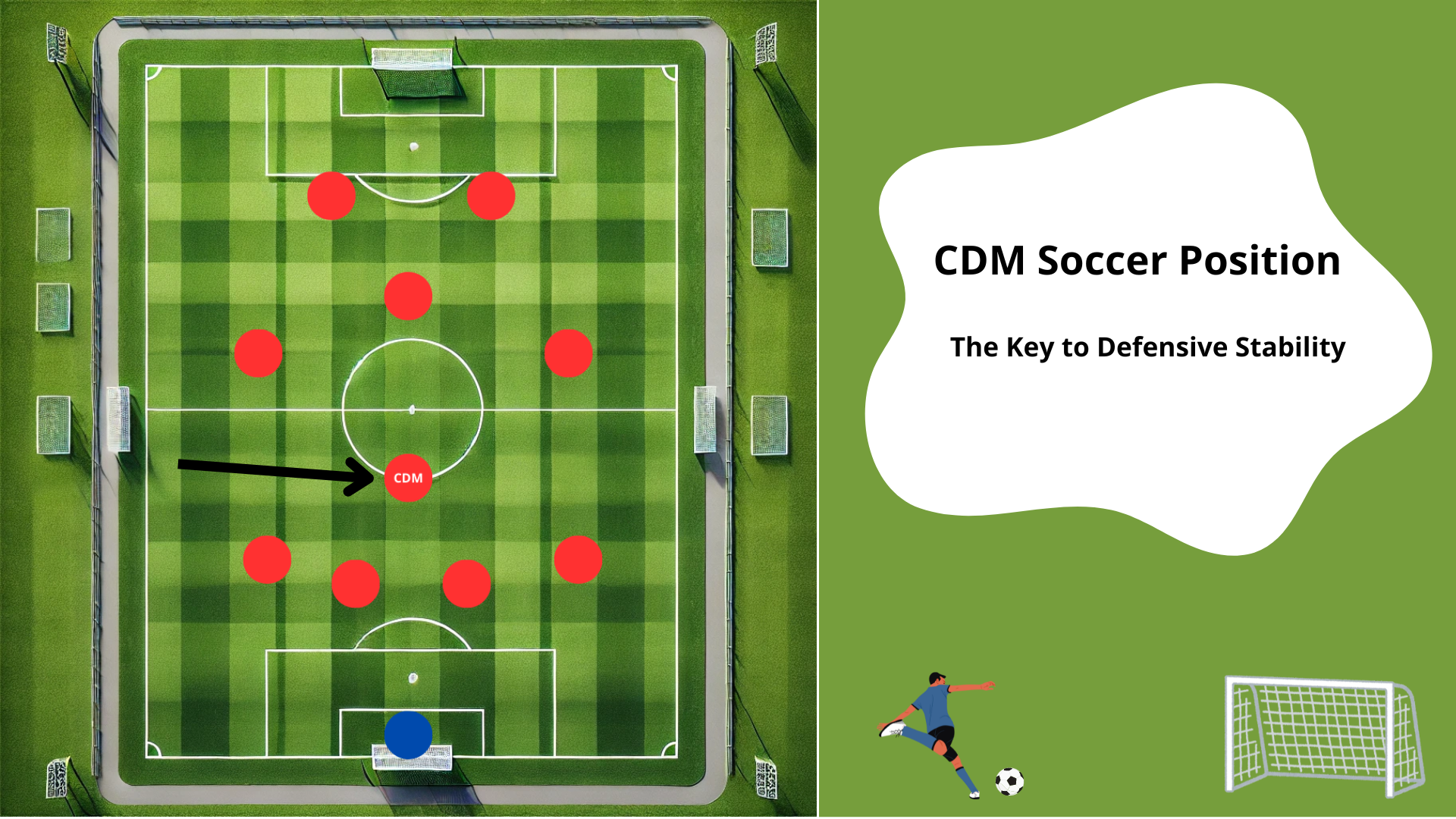The Central Defensive Midfielder (CDM) position is often regarded as the backbone of a soccer team. Tasked with protecting the defense and linking play between the backline and the attack, the CDM plays a crucial role in maintaining the team’s structure.
In this article, we’ll delve into what it means to play as a CDM, the essential skills required, and how this position influences a team’s performance on the field.
What is the CDM Position in Soccer?
The CDM, or Central Defensive Midfielder, is positioned centrally in front of the defensive line. This role is primarily defensive, with responsibilities that include breaking up opposition attacks, covering the defense, and distributing the ball to more advanced teammates.
Unlike other midfield roles, the CDM’s main focus is on defense, making it a pivotal position for teams looking to maintain balance and control in the game.
The Role and Responsibilities of a CDM
Defensive Shield
The CDM acts as a shield for the defense, intercepting passes, making tackles, and preventing the opposition from penetrating the defensive line.
Ball Recovery
A CDM is often responsible for winning back possession, whether through interceptions or tackles, and quickly transitioning the team from defense to attack.
Positional Discipline
Maintaining proper positioning is key for a CDM, as they need to be in the right place to disrupt the opponent’s play and support the defense.
Linking Play
While primarily defensive, the CDM also plays a crucial role in linking the defense with the midfield and attack, often serving as the first point of distribution after regaining possession.
Do not forget about getting yourself a pair of comfy shoes when you are off the field. Click on the image below to visit our partners store.
Essential Skills for a CDM
Tackling
A CDM must be strong in the tackle, able to dispossess opponents without conceding fouls.
Interception
Reading the game and anticipating passes is crucial for cutting out opposition attacks before they develop.
Passing
Accurate short and long-range passing is vital for transitioning the team from defense to attack.
Positioning
Staying disciplined and maintaining the correct position on the field ensures the CDM can effectively protect the defense.
Stamina
A CDM often covers a lot of ground, requiring high levels of stamina and fitness.
How to Train for the CDM Position
To excel as a CDM, players need to focus on drills that enhance their defensive skills, positioning, and distribution. You can find some training tips down below.
Tackling Drills
Practice one-on-one tackling to improve timing and technique.
Positional Awareness
Engage in tactical drills that emphasize maintaining shape and understanding when to press or hold.
Passing Practice
Work on both short, quick passes and long balls to ensure versatility in distribution.
Fitness Training
Incorporate stamina-building exercises like interval running to maintain high energy levels throughout the match.
Famous CDMs in Soccer History
Several players have become iconic in the CDM role, known for their defensive prowess and leadership on the field:
Claude Makélélé

Often considered the gold standard for CDMs, Makélélé’s ability to break up play and cover the defense was unmatched.
Sergio Busquets

Known for his calmness on the ball and tactical intelligence, Busquets has been a key figure in Barcelona’s success.
N’Golo Kanté

Renowned for his work rate, Kanté’s energy and ability to win the ball back have made him one of the top CDMs in the modern game.
Common Formations Featuring a CDM
| 4-3-3 Formation | The CDM sits at the base of the midfield trio, providing stability and support to both the defense and more advanced midfielders. |
| 4-2-3-1 Formation | Often, this formation features two CDMs who work together to shield the defense and control the midfield. |
| 4-4-2 Formation | In a flat 4-4-2, the CDM partners with another central midfielder, focusing on defense while the partner may have more freedom to attack. |
Conclusion
The CDM position in soccer is crucial for teams aiming to maintain defensive stability and control in the midfield. By mastering the skills and understanding the responsibilities of this role, players can become indispensable to their teams, contributing to both defense and the transition to attack.
